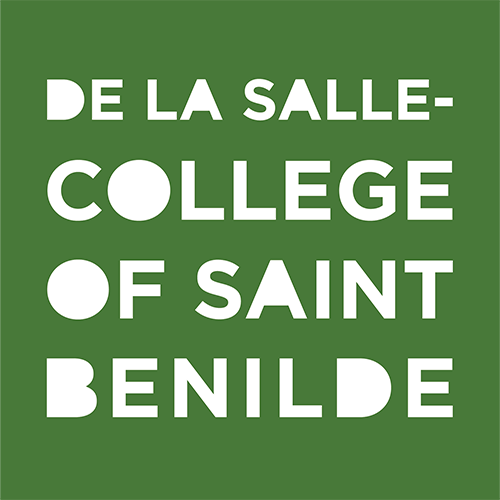List of Programs
List of Programs
- Accountancy and Business Management (ABM)
- Arts and Design
- General Academic Strand (GAS)
- Science, Technology, Engineering, and Mathematics Strand (STEM)
- TVL-Culinary Arts
Undergraduate Programs
School of Arts, Culture, and Performance
- Bachelor of Arts in Creative Industries Management (ABCIM)
- Bachelor of Performing Arts, Major in Dance (BPA-D)
- Bachelor of Fine Arts in Culture-Based Arts (BFA CBA)
- Bachelor of Arts in Music Production (BAMP)
- Bachelor of Arts in Production Design (AB-PRD)
- Bachelor of Arts in Theater Arts (ABTHA)
School of Deaf Education and Applied Deaf Studies
School of Diplomacy and Governance
- Bachelor of Arts Major in Diplomacy and International Affairs (AB-DIA)
- Bachelor of Arts in Governance and Public Affairs (AB-GPA)
School of Environment and Design
- Bachelor of Science in Architecture (BS-ARCH)
- Bachelor of Arts major in Fashion Design and Merchandising (AB-FDM)
- Bachelor of Science in Industrial Design (BS-ID)
- Bachelor of Science in Interior Design (BS-IND)
School of Hotel, Restaurant and Institution Management
- Bachelor of Science in Culinary Arts Management (BS-CAM)
- Bachelor of Science in Hospitality and Luxury Management (BS-HLM)
- Bachelor of Science in Tourism Management (BSTM)
- Bachelor of Science in International Hospitality Management (BS-IHM)
School of Management and Information Technology
SMIT-Leadership, Management and Entrepreneurship Cluster
- Bachelor of Science in Business Administration Major in Business Management (BSBA-BM)
- Bachelor of Science in Business Administration Major in Export and Global Business Management (BSBA-EGBM)
- Bachelor of Science in Business Administration Major in Human Resource Management (BSBA-HRM)
- Bachelor of Science in Business Administration Major in Marketing Management (BSBA-MM)
- Bachelor of Science in Real Estate Management (BS-REM)
- Bachelor of Science in Social Innovation and Entrepreneurship (BS-SIE)
SMIT-Analytics, Computing and Infotech Cluster
- Bachelor of Science in Business Administration Major in Business Intelligence and Analytics (BSBA-BIA)
- Bachelor of Science in Business Administration Major in Business Solutions and Applications (BSBA-BSAA)
- Bachelor of Science in Cybersecurity (BSCSEC)
- Bachelor of Science in Information Systems (BS-IS)
- Bachelor of Science in Game Design and Development (BS-GDD)
School of Multidisciplinary Studies
- Bachelor in Holistic Disciplines (B-HOLD)
School of New Media Arts
- Associates in Animation (AiA)
- Bachelor of Arts in Animation (ABANI)
- Bachelor of Arts in Film (ABFILM)
- Bachelor of Arts in Multimedia Arts (ABMMA)
- Bachelor of Arts in Photography (ABPHOTO)
- Bachelor of Science in Accountancy
- Bachelor of Arts in Communication
- Bachelor of Secondary Education Major in English
- Bachelor of Science in Hospitality Management
- Bachelor of Science in Information Systems
- Bachelor of Science in Business Administration Major in Marketing Management
- Bachelor of Science in Psychology
- Bachelor of Science in Tourism Management
- Master of Digital Media (MDM)
- Master in Human Resource Management (MHRM)
- Master in International Business (MIB)
- Master of Science in Tourism and Hospitality Management (MSTHM)
- Doctor in Tourism and Hospitality Management (DTHM)
- Doctor of Philosophy in Tourism and Hospitality Management by Research (PHD-THM)
Expanded Tertiary Education, Equivalency and Accreditation Program (ETEEAP)
- Bachelor of Science in Hospitality and Luxury Management (BS-HLM)
- Bachelor of Science in Information Systems
- Bachelor of Arts in Music Production
- Bachelor in Performing Arts, Major in Dance
- Bachelor of Arts in Production Design
Notes:
- BDS and SHS are offered under permit by the Department of Education.
- BAPDST is open to Deaf applicants only. After passing the screening based on the submission of previous grades and other admissions
documents, applicants must also pass the second stage of the screening (e.g. interview) prior to acceptance into the program. - BSLI is open to Hearing applicants.
- ABMP, ABPRD, ABTHA, and BPAD: After passing the screening based on the submission of previous grades and other admissions documents, applicants must also pass the second stage of the screening (e.g. audition, interview, submission of portfolio) prior to acceptance into the program.
- DLS-CSB is authorized by CHED to offer Expanded Tertiary Education Equivalency and Accreditation Program (ETEEAP).
- BS-HLM, BSTM, BS-IHM, and BS-CAM for SY 2024-2025: Student applicants are required to submit Quantitative Hepatitis Titer as additional requirement prior to acceptance into the program.
- BS-IHM is offered in partnership with VATEL.
